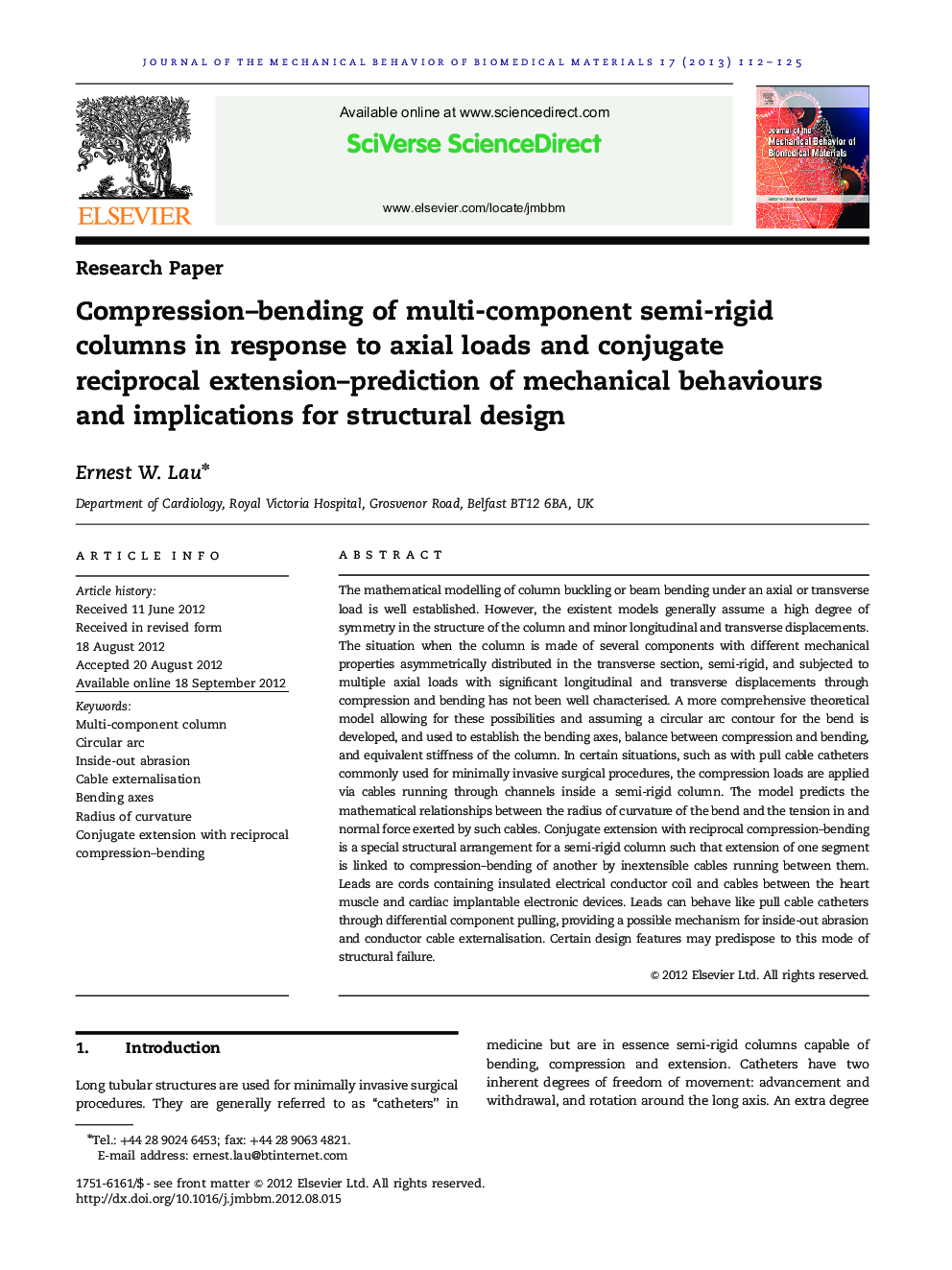| کد مقاله | کد نشریه | سال انتشار | مقاله انگلیسی | نسخه تمام متن |
|---|---|---|---|---|
| 810972 | 1469128 | 2013 | 14 صفحه PDF | دانلود رایگان |

The mathematical modelling of column buckling or beam bending under an axial or transverse load is well established. However, the existent models generally assume a high degree of symmetry in the structure of the column and minor longitudinal and transverse displacements. The situation when the column is made of several components with different mechanical properties asymmetrically distributed in the transverse section, semi-rigid, and subjected to multiple axial loads with significant longitudinal and transverse displacements through compression and bending has not been well characterised. A more comprehensive theoretical model allowing for these possibilities and assuming a circular arc contour for the bend is developed, and used to establish the bending axes, balance between compression and bending, and equivalent stiffness of the column. In certain situations, such as with pull cable catheters commonly used for minimally invasive surgical procedures, the compression loads are applied via cables running through channels inside a semi-rigid column. The model predicts the mathematical relationships between the radius of curvature of the bend and the tension in and normal force exerted by such cables. Conjugate extension with reciprocal compression–bending is a special structural arrangement for a semi-rigid column such that extension of one segment is linked to compression–bending of another by inextensible cables running between them. Leads are cords containing insulated electrical conductor coil and cables between the heart muscle and cardiac implantable electronic devices. Leads can behave like pull cable catheters through differential component pulling, providing a possible mechanism for inside-out abrasion and conductor cable externalisation. Certain design features may predispose to this mode of structural failure.
Figure optionsDownload high-quality image (153 K)Download as PowerPoint slideHighlights
► Compression–bending of multi-component semi-rigid column under axial loads.
► Bend of deflectable catheters and the tension and normal force of the cables inside.
► Conjugate extension with reciprocal compression–bending governs the relationship.
Journal: Journal of the Mechanical Behavior of Biomedical Materials - Volume 17, January 2013, Pages 112–125